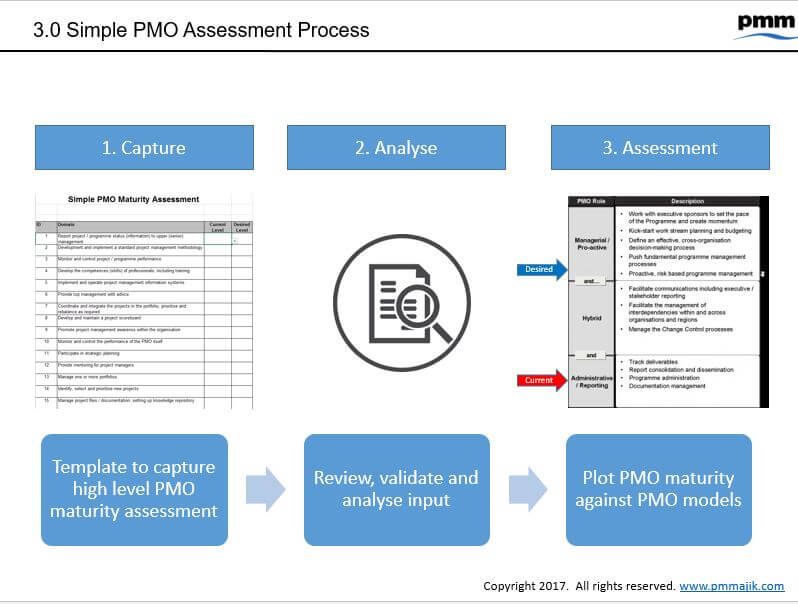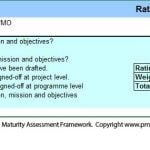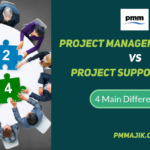If you are involved in setting up or running a project management office there comes the point when you have implemented the PMO and you move into business as usual (BAU). Now after all the hard effort to set-up the PMO you may think that you are “done”. However, the reality is the journey has just started.
If you have been a follower of the articles on www.pmmajik.com, there is a lot of content focused on the definition and set-up of the different tools and processes for a PMO. The PM Majik Member’s area provides many tools to help with this. In the next few articles I want to focus on:
- How you evaluate the current maturity of the PMO within an organisation
- Action to continually improve
Important, before I go any further. If you are on the journey to implement or even just implemented your PMO, I do not want you to feel deflated that your still have more to do. You have made a significant achievement as you have taken action. This separates you from the majority of people.
So take time to celebrate and enjoy the success. There will always be more to do whatever walk of business or personal life. As it is often said, “life is about the journey, not the destination”. Meaning find enjoyment in each step of the journey.
Project Maturity
For those involved in the project / change profession, you will probably be aware that there are a number of methodologies to assess the project management maturity of an organisation. Examples being:
- Prince2 Maturity Model
- Organizational Project Management Maturity Model (OPM3)
- PPM Maturity Model
- Kerzner Project Management Maturity Model
There is then the wider Capability Maturity Model (CMM) that was originally developed by the US Department of Defense to assess the capability of software contractor’s to deliver projects.
The CMM approach has a 5 level model for assessing an organisation. The thought process being that as an organisation moves up through the levels the quality and outcomes should improve. This should equate to a high probability of projects being delivered on time, to budget and with the correct functionality.
Level 1: Initial – processes unpredictable, poorly controlled and re-active
Level 2: Managed – process characterised for projects and is often reactive
Level 3: Defined – process characterised for the organisation and is proactive
Level 4: Quantitatively Managed – process measured and controlled
Level 5: Optimizing – focus on continuous process improvement
Therefore, given this focus on standardising and improving the project management process, the logical extension is the same should be applied to the PMO.
PMO Maturity Challenge
Despite all of the work on project maturity models, little work has been done to create models for the PMO. Therefore, this presents a challenge when you want to assess the capability and maturity of your PMO and evaluate where you want the maturity level for your PMO.
The PMO Maturity Cube was developed in approx.. 2012 by A Pinto. This provided a framework of how a PMO could assess current capability against a number of factors. This is a very good approach.
However, part of the reason for sharing knowledge on www.pmmajik.com is to try and simplify the approach to achieve the required outcome. With this in mind I wanted to share some high level thoughts on measuring PMO Maturity.
PMO Maturity Objectives
This is always a good place to start. What do you want to achieve from doing the work?
In this case it is simple in that you want to:
Understand the current maturity of your PMO
Plot where your PMO is on the maturity scale
Establish where you would like / need your PMO to be on the maturity scale
Identify areas for improvement to achieve desired level of PMO maturity
1. Understand current maturity of your PMO
It is often said “you need to know where you are in order to work out where you are going”.
This is what you need to do for this step. You need to capture the required data in order to plot the current level of PMO maturity.
The best method is in the form of data capture against the core PMO processes. In the simplest form this can be a number of questions where you rate Yes or No. The rating can be made more sophisticated using RAG, Levels, etc. The important point being you are gaining an honest assessment of the activity performed.
Below is an example of this using an extract of the PMO Maturity Cube questions.
2. Plot your PMO on the maturity scale
In order to plot something, you need to have some form of scale. What I have used over the years is a simple model that shows how a PMO matures from and Administrative / Reporting PMO through Hybrid and into a Managerial / Directing PMO (see What is a Project Management Office for more details).
So based on the data collection, you can assess where your PMO sits against this model. Yes there will be a level of subjectivity but it will give you a good idea where your PMO is on the scale.
If you want a more sophisticated calculation can be applied to drive rating.
3. Desired maturity of PMO
In order to evaluate the desired / required level of your PMO, you need to go back to the original objectives of the PMO (see Objectives of a PMO). Based on this you should be able to establish what the PMO sponsor needs / expects.
You can use the same data collection as in step 1 but this time assess based on desired PMO not current state of PMO.
This will allow you to plot the desired level on the PMO model chart.
You will then probably have a gap between the Current and Desired plots. This is the maturity gap you need to address.
4. Identify PMO improvements
With the data collected in step 1 and step 3, you can compare the current state assessment and desired level for each data item. This will give you there areas that need to be improved.
Armed with this knowledge, you can create a plan of the tasks that need to be completed to improve the process to the required level.
Execute the plan and you will be able to move your PMO up the maturity curve.
Best of all, you can do this in bite size chunks which means you can deliver increment value – very agile!
Summary
- Designing and implementing a PMO is a good achievement but is also the start of an exciting journey.
- Use a structured approach to assess current maturity and desired maturity.
- Analyse data to identify gaps and then create a plan to address the gaps.
Following the 4 steps in this guide will help you to start the PMO maturity journey.








